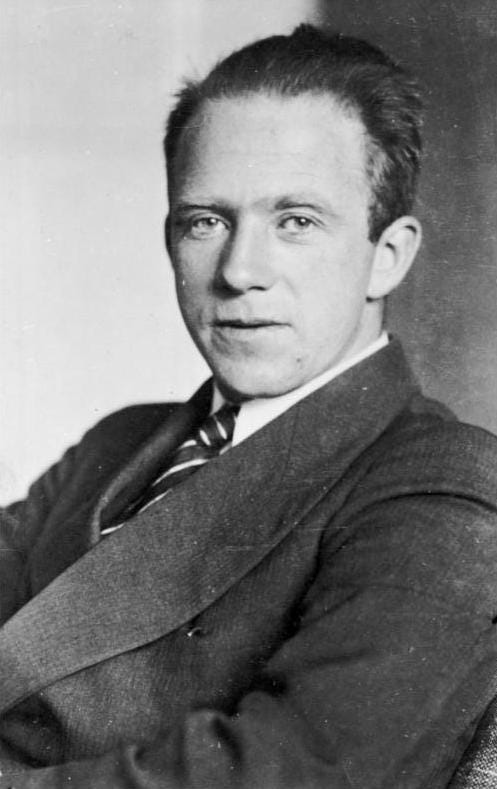“Now I am become Death, the destroyer of worlds.”
October, 2022
Desire is a lot of things. One of those things is Bob Dylan’s 1975 album, which doesn’t have any of my favorite songs, but — unusually for me, at least — somehow hangs together as a collection that’s somewhat more than just the individual songs. I was around when the album first appeared, but I’m nearly certain I wasn’t aware of it in the least. Music wasn’t very important to me in those days, and although I probably knew the name Bob Dylan because of his famous 1960s songs like Blowin’ in the Wind (I mean, everybody knew that song, seemingly instantly). But I didn’t buy records — I don’t remember even owning a turntable in those days.

Later on (much later) I did get interested in the album, and even read a bit about it. The cover photo is a tribute to the photo John Phillips (of the Mamas and the Papas) put on the cover of his 1970 album John Phillips (John, the Wolf King of LA):

The list of tracks on the album doesn’t say much about its theme:
Hurricane Isis Mozambique One More Cup of Coffee Oh Sister Joey Romance in Durango Black Diamond Bay Sara
Several of them are about people, not ideas or stories. A little out of the Dylan mainstream. But then there’s the title. Desire.
Desire is a vaporous thing. It’s often connected to physical wants, but not necessarily so. In the grips of physical desire, which can be a confusing and confounding thing, people will sometimes say, defeated by attempts to understand, “the heart wants what it wants.”
In extreme duress, desire can shrink down to a single thing; health or deliverence or whatever it might be. Desire can be warped and twisted and parasitized by the moment, if you let it. There’s a gravity to the now of your life.
Things that co-opt and change desire are the things we’re afraid of, or should be. Things like depression. Zealotry, true belief. Things that increase the gravity of the here and now and have the devastating gravity to suck desire down to a pinpoint, like a singularity. The guy who first envisioned the singularity we now call a “black hole,” Karl Swarzchild, was so horrified by it he might have been driven mad. At the very least he was driven…weird. The most advanced mathematics have had that effect on more than one of the few people able to understand math at that level. Swarzchild also managed to derive a solution for Einstein’s equations for general relativity; something Einstein himself had not expected to be done within his lifetime. Swarzchild sent the solution to Einstein in a letter from the Russian front in World War I. He was serving as a lieutenant in a German artillery unit at the time. Einstein wrote back to Swarzchild, but not soon enough to find him still alive.
Desire changes with age and time and circumstance. The memories of past desires, though, those can linger, unable to escape the gravity of your self perception. Sometimes you can finally satisfy a youthful desire much later in life, but when you do that, it’s no longer your desire. It was part of that former version of you. People do this kind of thing all the time. You finally obtain what you once desired and as it comes to you, perhaps you hope that your youth will accompany it. But it doesn’t, and then there you are, an aging human with a hopeful expression, sitting in your new sports car or astride your motorbike or offering an arm to your young and beautiful mate whose sidelong glances are always just beyond your perception.
Maybe Dylan chose Desire as his title because desire is chaotic, unexpected, inexplicable. The making of that album was like that, and so was the Rolling Thunder Revue, the 57-concert tour Dylan was in the midst of when he released Desire.
Mathematicians, at the highest level, seem to prefer order, understanding, and predictability to situations like the Rolling Thunder Revue. Maybe that’s why Swarzchild was so shaken when math itself led him to the realization that singularities exist — where time and space lose their meanings. Earlier in life, Swarzchild believed that math, physics, and astronomy were all aspects of the same thing. He once said “only a vision of the whole, like that of a saint, a madman or a mystic, will permit us to decipher the true organizing principles of the universe.” That seemed to be the bedrock of his thinking: that the universe was organized. But his own calculations showed that every object has a Swarzchild radius — the size below which the object’s mass essentially drops through the bottom of the universe, and nothing escapes. The gravity that holds us to the world and enables our own existence turns into its metaphorical opposite, and becomes a destroyer.
Desire can be like that too; it can start as a creative, unifying force, only to become one’s undoing. Isis and Sara, two of the songs from Desire, tell stories around that transformation. Isis is the story of a man who goes on a strange quest for wealth, only to find nothing and return empty handed — but perhaps having learned something. Sara is about Dylan’s real-life wife Sara and their troubled marriage. Gravity again; the pull of desire can transform into something quite different.

Erwin Schrödinger and Werner Heisenberg both helped create quantum theory in the first half of the 20th century. They were both mathematicians of the highest order — Schrödinger created the equations describing a “wave function,” and Heisenberg created a purely mathematical, matrix-based description of the subatomic world.

They were rivals, at least for a while, and both were people of strong desires in many realms. Schrödinger’s household included both his wife and his mistress, and was accused of sexual abuse by other women. Heisenberg’s desires ran in different directions, and propelled him to become a remarkably skilled pianist. Both men glimpsed the disorder and uncertainty that seem to be the very foundations of the universe at the quantum level, and reportedly neither liked it one bit.
Dylan’s lyrics to Isis include this:
Isis, oh, Isis, you're a mystical child What drives me to you is what drives me insane.
The gravity of desire, and the gravity of the universe, work in mysterious ways.
Source material:
Schrödinger: Life and Thought, by Walter Moore
Uncertainty: Einstein, Heisenberg, Bohr and the Struggle for the Soul of Science, by David Lindley
Desire, by Bob Dylan
When we Cease to Understand the World, by Benjamín Labatut
The subtitle is what Robert Oppenheimer reportedly quoted at the first test of the atomic bomb; it’s from the Bhagavad Gita. He was talking about an explosion, but the quotation applies at least as much to a singularity.
